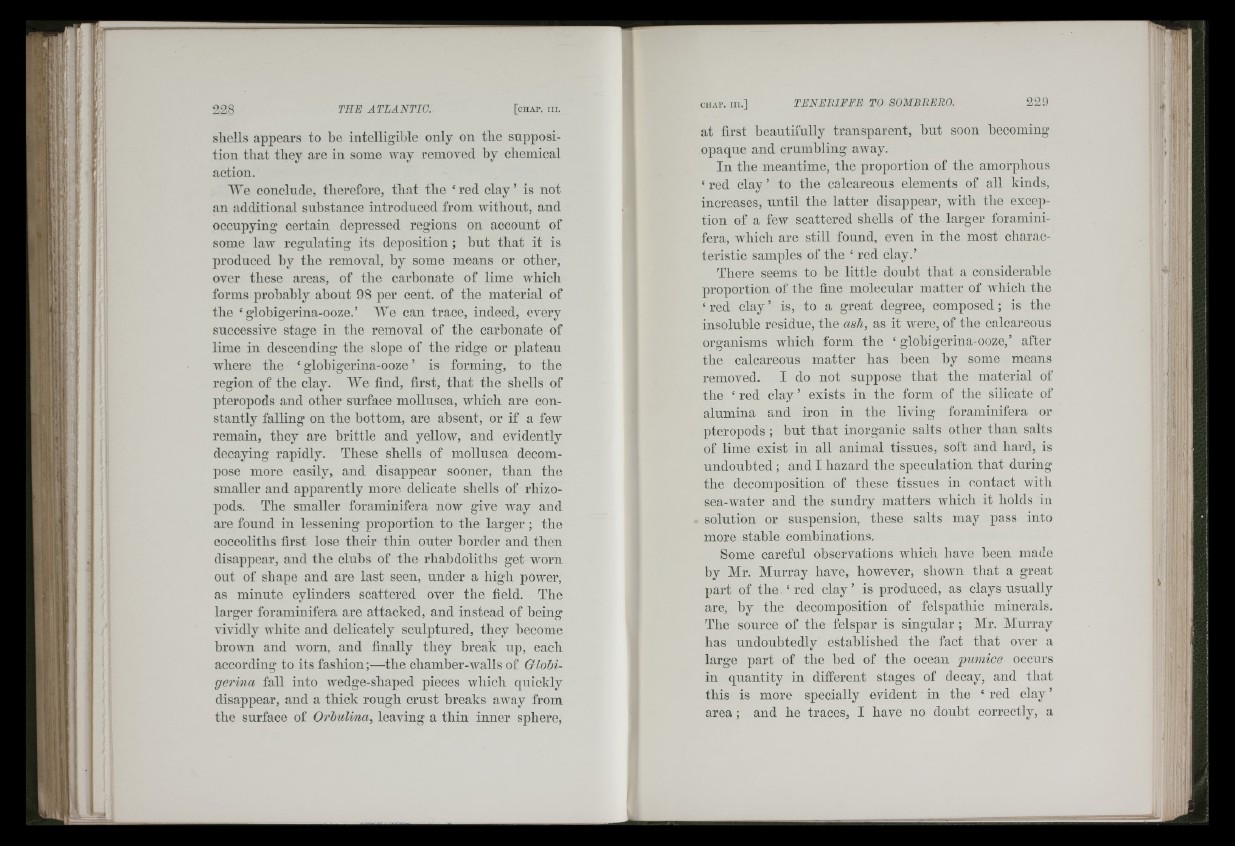
228 THE ATLANTIC.
shells appears to he intelligible only on the supposition
that they are in some way removed by chemical
action.
We conclude, therefore, that the ‘ red clay ’ is not
an additional substance introduced from Avithout, and
occupying certain depressed regions ou account of
som.e laAv regulating its deposition ; hut that it is
produced hy the removal, by some means or other,
over these areas, of the carbonate of lime which
forms probably about 98 per cent, of the material of
the ‘ globigerina-ooze.’ We can trace, indeed, every
successive stage in tlie removal of the carbonate of
lime in descending the slope of the ridge or plateau
where the globigerina-ooze ’ is forming, to the
region of the clay. We find, first, that the shells of
pteropods and other surface mollusca, which are constantly
falling on the bottom, are absent, or if a few
remain, they are brittle aud yelloAv, and evidently
decaying rapidly. These shells of mollusca decompose
more easily, and disappear sooner, than the
smaller aud apparently more delicate shells of rhizo-
pods. The smaller foraminifera now give Avay and
are found in lessening proportion to the larger; the
coccoliths first lose their thin outer border and then
disappear, and the clubs of the rhahdoliths get Avorn
out of shape aud are last seen, under a high power,
as minute cylinders scattered over the field. The
larger foraminifera are attacked, aud instead of being
vividly white and delicately sculptured, they become
brown and Avoru, aud finally they break up, each
according to its fashion;—the chamber-walls of Glohigerina
fall into wedge-shaped pieces Avhich quickly
disappear, aud a thick rough crust breaks aAvay from
the surface of Orhulina, leaving a thin inner sphere.
at first beautifully transparent, hut soon becoming
opaque and crumbling aAvay.
In the meantime, the proportion of the amorphous
‘ red clay ’ to the calcareous elements of all kinds,
increases, until the latter disappear, with the exception
of a few scattered shells of the larger foraminifera,
which are still found, even in the most characteristic
samples of the ‘ red clay.’
There seems to be little doubt that a considerable
proportion of the fine molecular matter of Avhich the
‘ red clay ’ is, to a great degree, composed ; is the
insoluble residue, the ash, as it Avere, of the calcareous
organisms which form the ‘ glohigerina-ooze,’ after
the calcareous matter has been hy some means
removed. I do not suppose that the material of
the ‘ red clay ’ exists iu the form of the silicate of
alumina aud iron iu the living foraminifera or
pteropods ; but that inorganic salts other than salts
of lime exist iu all animal tissues, soft and hard, is
undoubted; and I hazard the speculation that during
the decomposition of these tissues in contact A v i t h
sea-water and the sundry matters which it holds iu
solution or suspension, these salts may pass into
more stable combinations.
Some careful observations which have been made
by Mr. Murray have, hoAvever, shown that a great
part of the ‘ red clay ’ is produced, as clays usually
are, hy the decomposition of felspathic minerals.
The source of the felspar is singular ; Mr. Murray
has undoubtedly established the fact that over a
large part of the bed of the ocean pumice occurs
in quantity iu different stages of decay, and that
this is more specially evident in the ‘ red clay ’
area; and he traces, I have no douht correctly, a
\ : i i
jj mi : Ì I
) ML "
: t i n .